Fashion flashbacks and exclusive tales from iconic artists and some of the biggest names in the music biz…
In her latest book, prominent, best-selling author Alice Harris takes us on a photographic journey illustrating four decades of pop, rock, soul, disco, funk, punk, reggae, heavy metal and hip hop fashion. Sparkling sequins, safety pins and even suits from outer space are spotlighted in an unprecedented collection of over 80 images of legendary music acts by acclaimed photographers.
What The Band Wore traces the evolution of stage wear from the 1960s through to the 1990s, and this exclusive sneak peek showcases a handful of artists who thread together a fabulous celebration of fashion and music.
The Beatles
In 1963, John, Paul, George, and Ringo were ready for their close-up… and ready to send shockwaves across the globe. On the cusp of achieving worldwide success, The Beatles met Paris-based designer Pierre Cardin, whose Space Age themes revolutionised menswear in the early 1960s. He was also the first couturier to put a man on the catwalk.
“The Beatles came directly to me,” Cardin recalled in Brooklyn Museum’s Pierre Cardin: Future Fashion (2019). “I made them these suits at their request. It was at the beginning of their careers and, with these collarless jackets, of course they were going to stand out on stage.” The band modelled Cardin’s slim-cut, sleekly tailored suits from his ‘Cylinder’ collection on the covers of 45 singles like “She Loves You” and “I Want to Hold Your Hand” and wore them during countless sweat-soaked performances.
“He’s original,” noted 21-year-old Paul McCartney, when asked about Cardin. “Groups didn’t used to have this sort of jacket. We adopted this fashion.” Photographer Terry O’Neill captured a playful moment of The Beatles in their Cardin suits, which local tailor Douglas Millings copied in several different fabrics and colours. The group’s matching mop-tops also stirred a sensation, especially after their US television premiere on The Ed Sullivan Show in February 1964. George Harrison dubbed their hairstyle “the Arthur,” inspiring a legion of listeners to experiment with scissors and combs. Modern bands like Oasis, One Direction, and K-Pop band BTS later approximated the group’s shaggy-locked ’dos but it was The Beatles who set a thrilling new standard in rock ’n’ roll style.
Photo: The Beatles (Terry O’Neill/Iconic Images)
Jimi Hendrix
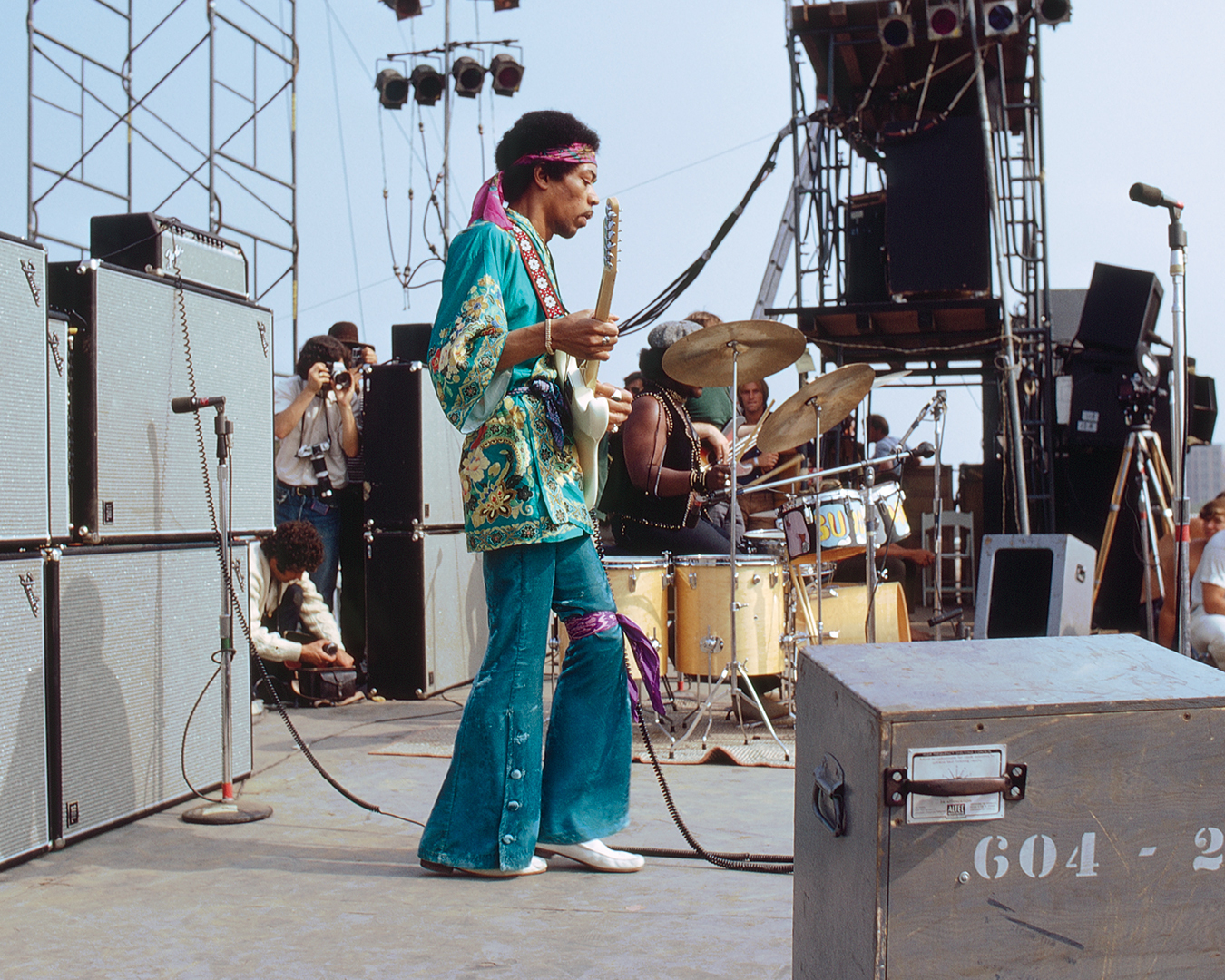
Jimi Hendrix was a veritable kaleidoscope of fashion, from vintage Hussar jackets to feather boas. His style typified the Peacock Revolution that overlapped with his move to London in 1966, when British bands began incorporating a vibrant array of colours, patterns, and fabrics into their wardrobe. King’s Road boutiques like Hung On You and Granny Takes a Trip catered to the stylistic whims of bands like The Rolling Stones, The Beatles, Pink Floyd, The Kinks, and The Jimi Hendrix Experience.
Within two years of his return to the USA in 1967, Hendrix developed a style all his own, customised by Florida-based designers Michael Braun and Toni Ackerman. For his encore appearance at the June 1969 Newport Pop Festival, he wore a silk Japanese haori jacket (a garment traditionally worn over a kimono) plus blue velvet bellbottoms.
His accessories were functional as much as fabulous – a head scarf curbed sweat and added a splash of colour. Ed Caraeff, who photographed Newport ’69, plus the historic Monterey Pop Festival where Hendrix set his guitar on fire, describes him as “One of a kind… Jimi had the style, the swag, the coolness, and backed it up with the genius talent”.
A month later, Hendrix wore the same haori for his US television debut on The Dick Cavett Show. “I bet you didn’t wear this in the paratroops,” Cavett quipped, noting the guitarist’s stint in the 101st Airborne Division of the US Army. Sitting with the host, Hendrix exuded a unique combination of sensuality and confidence matched only by his guitar playing… and unequalled by any other musician.
KISS
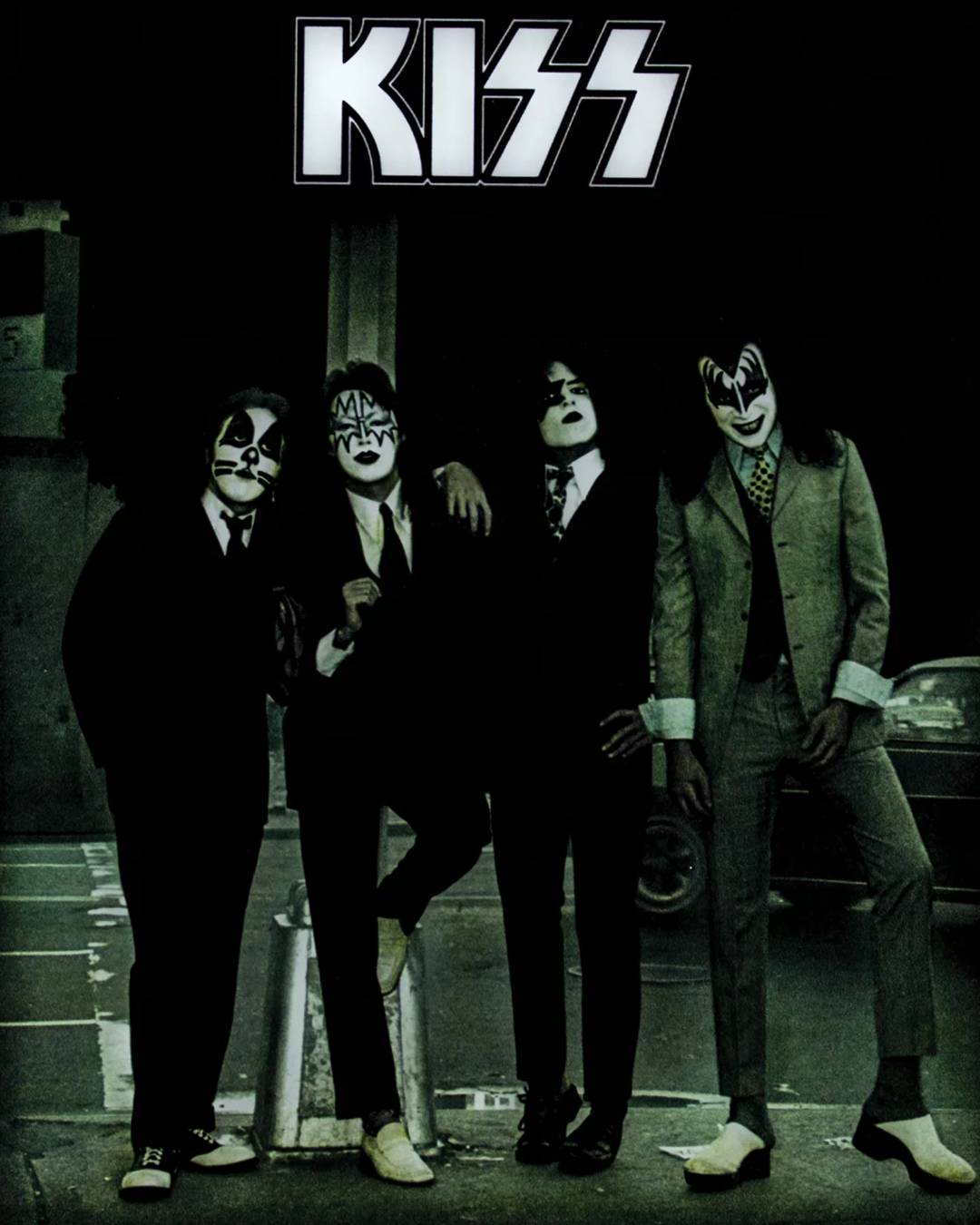
Starchild + the Demon + Catman + Spaceman = KISS. With their respective characters, Paul Stanley, Gene Simmons, Peter Criss and Ace Frehley amplified the glam-rock aesthetic of the early ’70s by pairing a high-volt-age musicality with elements of fantasy, science fiction and comic books. Group manager Bill Aucoin introduced the band to New York-based designer Larry LeGaspi, who’d already created the space-suit attire for Labelle and helped KISS coordinate and accessorise each character’s uniform. “We weren’t content to just stand there and strum our guitars,” Gene Simmons wrote in KISS and Make-Up (2001). “We wanted to make a big splash.
“As the band became more and more successful, we got letters from people who were wearing our make-up. They started to get involved in the mystique. We soon realised that we had created alter egos. The fans wanted them, not us. They wanted Superman, not Clark Kent. We started to hide our real faces, which only fuelled the mystique.” KISS toyed with the Superman/Clark Kent dichotomy, wearing business suits in Bob Gruen’s cover photo for their third album, Dressed to Kill (1975). Shortly after the album’s release, Gruen captured KISS in full regalia backstage at the Beacon Theatre.
“The effect this quartet has on crowds is quite startling,” The New York Times reported at the time. “Perhaps it is KISS’s kabuki type make-up, the fact that its four members hurl glitter around and have a controlled fascination with fire and smoke” (1975). “We really built these four images,” Paul Stanley later shared in Classic Rock magazine. “You can go anywhere in the world and people know who KISS is, regardless of whether they know who those people are.” Indeed, the characters that KISS introduced in 1974 have successfully conquered and transcended five decades of musical trends.
Elton John
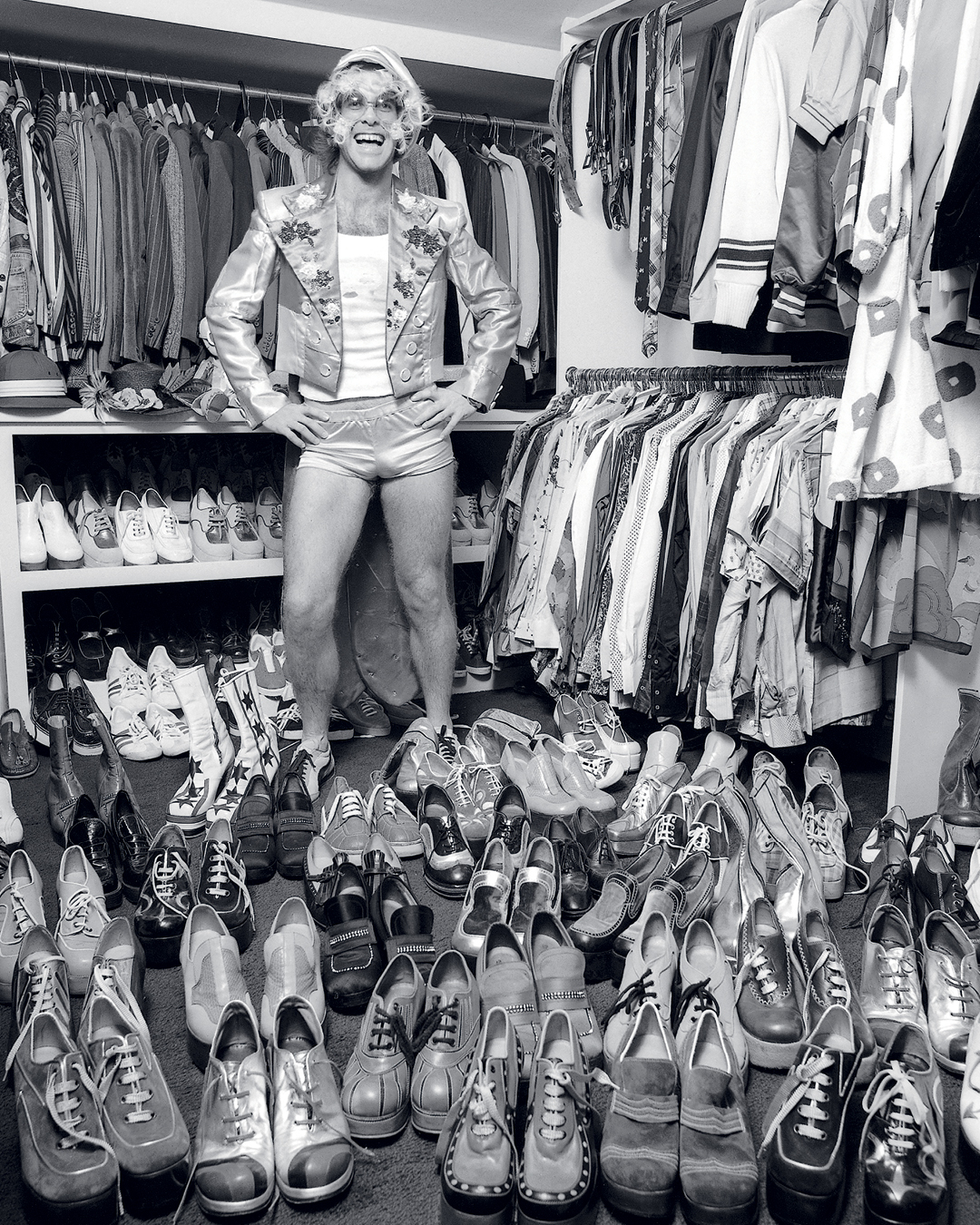
How did Reginald Dwight transform himself into Elton John? A designer named Tommy Roberts held the answer. Stationed on Kensington Church Street in London, his shop Mr. Freedom served up a wonderland of clothes. “It was like a beacon of hope for me,” Elton shared with V Magazine.
“In the ’60s, I was trapped inside the persona of Reggie Dwight. The fierce originality of his designs gave me the opportunity to reinvent and relaunch myself as Elton John in the ’70s.” (2018). The impression that Elton John made was so groundbreaking that Gucci modelled their Spring/Summer 2018 collection after many of his signature looks, including outfits designed by Annie Reavey, the first professional designer Elton worked with in the ’70s. “She designed things I’d never seen before, intricately made outfits with lots of Day-Glo colours that captured my spirit and my sense of humor,” Elton said.
As the ’70s progressed, he enlisted designers like Bob Mackie, Bill Whitten, and Tommy Nutter to create everything from sequin-trimmed eyewear to towering platform boots. Photographer Terry O’Neill offered a peek inside Elton’s closet during a 1975 photo session. “This all came about when I said, ‘Why don’t we go look at some of your collection. Maybe you could show me some of your shoes?’” O’Neill recalled in his book Elton John By Terry O’Neill (2018). “Little did I know what I was getting myself into. His closets were bursting with shoes, scarves and outfits – all the accessories a flamboy-ant star could wish for. And while some of the clothes were perhaps not my style, anyone could immediately see that he had great taste – in everything.” Then and now, music’s one and only “Rocket Man” could rock just about anything.
Bee Gees
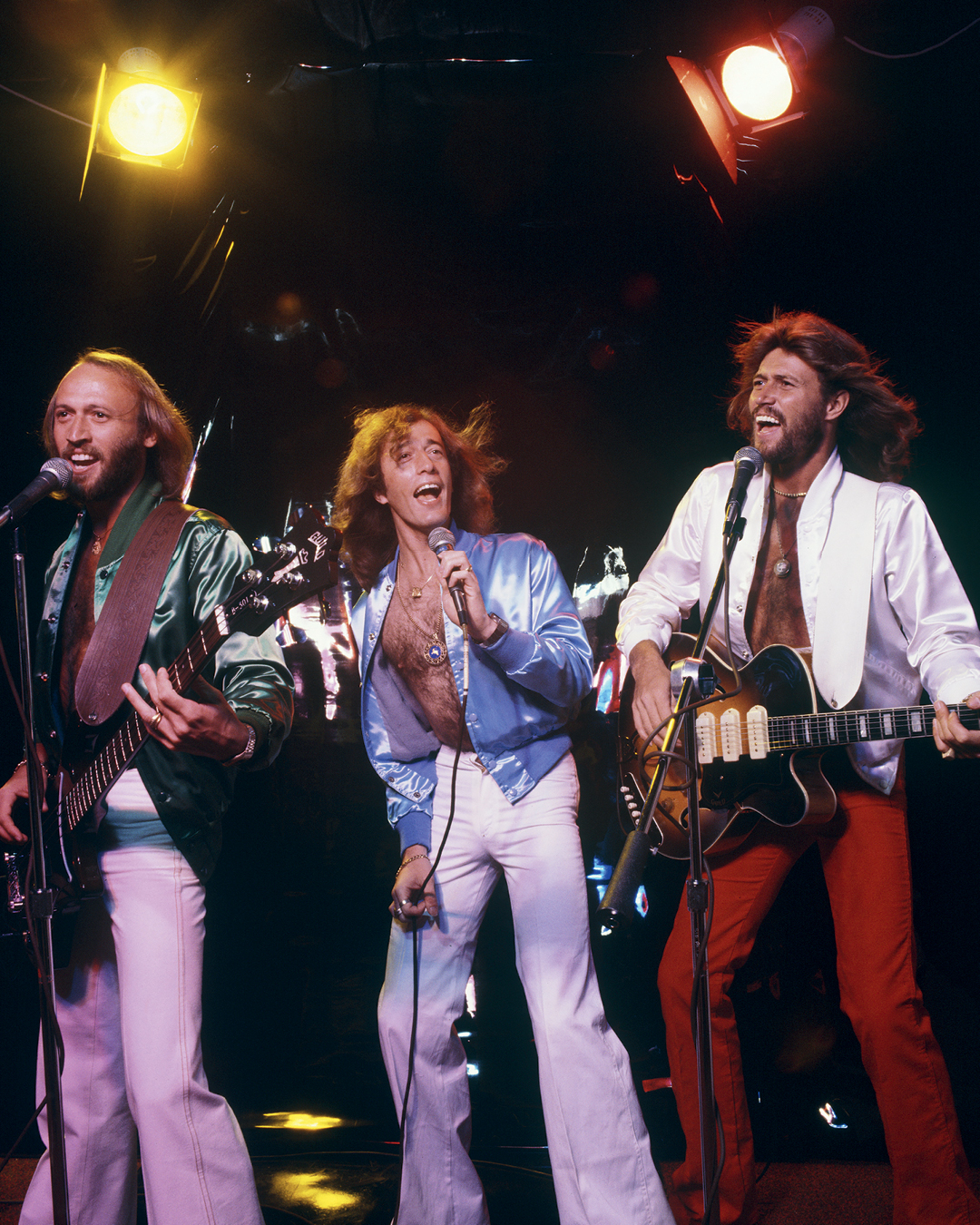
The Bee Gees flashed three sets of million-dollar smiles in June 1979. Just weeks before commencing their North American tour, brothers Barry, Robin and Maurice Gibb summoned the excitement of their live performances in photographer Ed Caraeff’s studio. They were arguably the world’s biggest pop act. Their contributions to Saturday Night Fever (1977) had made the film’s soundtrack the best-selling album in history at that time. They were also on the cusp of equaling The Beatles’ record of charting six consecutive number one singles.
Their trim physiques filled out tight pants and satin bomber jackets like no other group. In a 1979 cover story, Rolling Stone magazine described the trio as “a tanned picture of near-angelic deportment,” singling out eldest brother Barry Gibb’s “chiselled bronze visage, snug-fitting leather and satin outfits and hairy, medallion-festooned chest” as a symbol of the group’s impressive evolution from composers of baroque pop in the late ’60s to stylishly attired megastars. “His grace, canny charm, and utter confidence became the hallmarks of The Bee Gees’ metamorphosis.”
Reflecting on the stylistic impact the group made in the ’70s, The Guardian noted, “The Bee Gees took glam rock’s feminised masculinity one step beyond, gave it a disco spin and became synonymous with glitter balls, illuminated dance floors and enough man-made fibre to light up Manhattan with the static discharge”. Even when Justin Timberlake and Jimmy Fallon parodied that aesthetic on Saturday Night Live, there was clear admiration behind their playful characterisations. To this day, the Bee Gees’ satiny style and windswept harmonies remain shining exemplars of the era.
By Alive Harris & Christian John Wikane
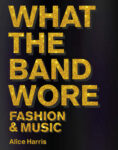
About the author – As iconic and stylish as her extensive catalogue of coffee-table-worthy art books, ALICE HARRIS has been inspired by her world travels and career in the fashion and music industries. She resides in New York City with her husband and family.
This is an edited extract from WHAT THE BAND WORE: FASHION & MUSIC (published by ACC Art Books, $85.00rrp) available at fine book stores and Amazon




